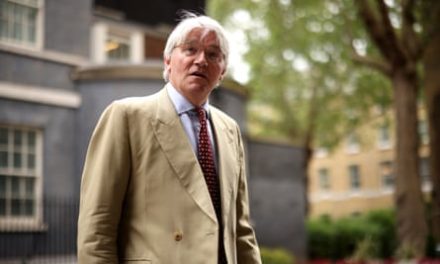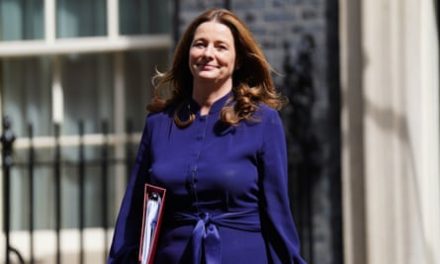A nationwide annual health check of England’s water bodies has been delayed by six years, prompting anger from campaigners and politicians, as public alarm grows over the state of the nation’s rivers and coasts.
The assessments, undertaken by the Environment Agency, look at the ecological and chemical condition of rivers, lakes, groundwater, and transitional and coastal waters, and are required under the Water Framework Directive (WFD).
In 2019, the last time the assessments took place, just 14% of rivers were in good ecological health and none met standards for good chemical health. Before 2016 the tests were done annually, but the government has now opted not to deliver a complete update until 2025.
Clean water advocates accused the government of trying to hide the data.
Rivers activist Feargal Sharkey said: “The future of England’s rivers has been sacrificed in a cynical act of self preservation by the very same failed government agency set up to protect them.”
The Green party peer Natalie Bennett said the government “clearly recognised the huge public anger about the parlous state of our waterways, but instead of taking action to clean them up, it is instead trying to hide the data”.
She added that the “stench of pollution, the choking of our waters with sewage, plastics and farm runoff is evident to all”, and that the Green party wanted to see a return to more frequent publication of the river health statistics. “Democracy demands transparency, and that’s one more thing this government is not delivering.”
The Guardian and Watershed Investigations, working with the Wildlife Trusts, found that partial results – about 21% of the total assessments delivered in 2019 (20,424 compared with 94,952) – were published this month but not flagged in the usual places on the Environment Agency or Defra’s website. No chemical assessments have been made, fewer ecological tests have been taken, and no canals, coasts, transitional waters or aquifers have been tested.
The incomplete dataset makes it difficult to ascertain an accurate nationwide picture of improvement or deterioration against the previous assessments.
Although the reduction in testing frequency is in line with WFD guidelines, it has disappointed campaigners.
Ali Morse, water policy manager at the Wildlife Trusts, said having “up-to-date data on the state of our waters is crucial to help us target action to protect and restore them.
“Waters are predicted to remain polluted until 2063 because of long-lasting chemicals found at every site checked, but that doesn’t mean we should now stop looking – we need to take action to tackle the pollutants that we can do something about, to monitor to make sure that those aren’t getting worse, and to identify any newly emerging chemicals so that we can put measures in place to prevent their further release.”
Morse said the new data that exists shows that the pressures facing water bodies are not going away. “The combination of issues like abstraction and pollution from farms, sewage works and urban areas, mean that few rivers are healthy. In one of the worst affected areas, the Thames river basin, 95% of the sites with new data don’t meet ‘good’ status, and the figures are similar for the Severn and Anglian river basins too.”
The Liberal Democrats’ environment spokesperson, Tim Farron, commented: “This is yet more evidence of a shocking lack of transparency about the health of our rivers. The government is letting profiteering water companies get away with sewage leaks, while toxic chemicals are finding their way into our rivers. We have no idea just how much pollution is in our rivers and on our beaches. The Liberal Democrats have repeatedly called for the Conservatives to take action, yet instead of doing so they seem to be trying to hide the problem.”
Under the WFD, all water bodies were meant to meet ‘good’ status by 2015. The deadline has been extended to 2027 but it has been known for some time that England’s rivers would miss the extended target date. In 2017, former Environment Agency chair Sir James Bevan told a government select committee that it would not be possible to meet the 2027 date.
Bevan has called for an overhaul of the way the WFD assessments are made, saying it should be less stringent so that more rivers could be given a clean bill of health. He argued that the “one-out-all-out rule”, under which if a water body fails on just one of a number of elements, the whole river fails, masks any improvements that may have been achieved across other parameters.
In the meantime, Defra has set itself a less well defined new target of getting rivers back to close to their natural state as soon as is practicable.
A spokesperson for Defra said the Environment Agency was legally obliged to publish a full set of data for every water body in England every six years. “The last full set was in 2019, with the next in 2025. However, to help with our work, and that of our partners, in the interim we have recently published a limited dataset that was collected between 2019 and 2021.
“We have deliberately targeted most of our sampling at water bodies with suspected problems so that we can get the evidence for investment (for example, from water companies and partners) where it is most needed. We haven’t included chemical or groundwater status which means not all water bodies have been updated.”
Join the exciting world of cryptocurrency trading with ByBit! As a new trader, you can benefit from a $10 bonus and up to $1,000 in rewards when you register using our referral link. With ByBit’s user-friendly platform and advanced trading tools, you can take advantage of cryptocurrency volatility and potentially make significant profits. Don’t miss this opportunity – sign up now and start trading!







Recent Comments